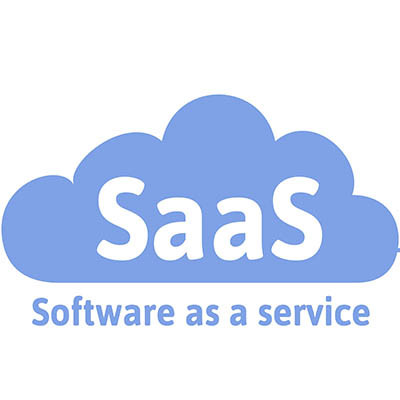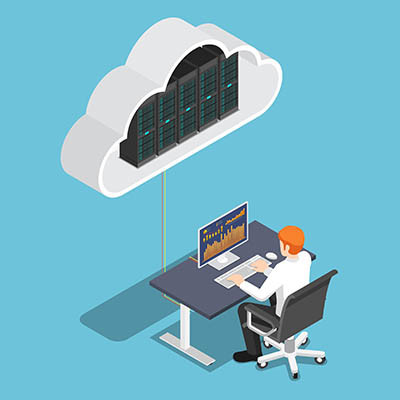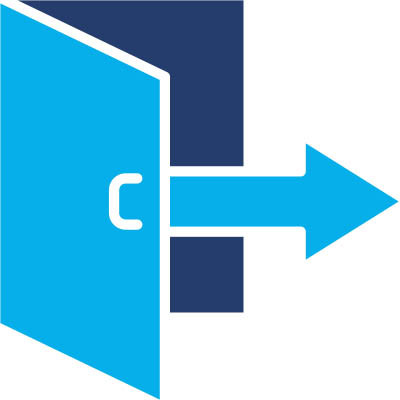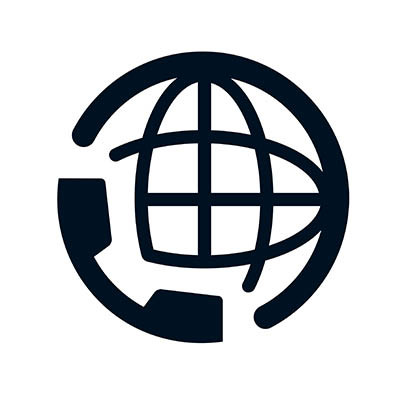Disruptions to your operations are no longer a possibility, but an inevitability. Situations like natural disasters, major IT failures, and security breaches happen every day for businesses all over the world, and you can bet that each of them is scrambling to minimize downtime to keep their reputations and bottom lines in check. What they might not know is that a business continuity strategy is at the heart of any successful recovery, and despite what you might think, it’s easier to carry out than you might suspect.
Accucom Blog
Over the next week or so, countless gingerbread houses will be created and then consequently destroyed. During that initial creative process, you’ll get to see careful preparation and precision, which should yield a longer-lasting, more sustainable product. You can apply a similar philosophy to handling your business’ data; with the right structures in place (like the 3-2-1 rule for data backup), you’ll find that your data is more resilient, sound, and less prone to, well, crumbling.
Does your business view its IT as just another necessary expense? Many small businesses think of IT as a simple box to check, a cost center that eats into profits and breaks down too frequently to actually yield a return on investment. We have news for you; modern IT management gives you a means not only to maintain the status quo, but to grow into a business that remains competitive in the long term.
As a business owner, you understand the need for harmony and efficiency. Whether it's the smooth operation of your supply chain, the flow of customers through your store, or the synchronization of your sales and marketing teams, when everything works together, your business sings.
Now, apply that same principle to the invisible but vital engine of your modern company: Information Technology (IT).
When companies talk about cybersecurity, they usually brag about their expensive technology they use to do the job: the firewalls, the fancy encryption, and the smart detection software. The thing that matters most, however, your actual employees, gets completely overlooked.
It only takes one wrong click for a whole network to crash. Even the smartest, most well-meaning and vigilant co-worker can accidentally unleash chaos under the right circumstances.
When companies talk about cybersecurity, they usually brag about their expensive technology they use to do the job: the firewalls, the fancy encryption, and the smart detection software. The thing that matters most, however, your actual employees, gets completely overlooked.
It only takes one wrong click for a whole network to crash. Even the smartest, most well-meaning and vigilant co-worker can accidentally unleash chaos under the right circumstances.
Does your business technology drive you up the wall with uncertainty? Are you reacting to IT problems when you would instead prefer to proactively leverage technology to drive your business’ growth? It’s not your fault; it’s the result of a phenomenon known as the Executive IT Gap, and it’s keeping you trapped in an endless cycle of reactive, costly, and inefficient technology decisions that are slowing your business down.
Are you exhausted from constantly dealing with garbled audio, dropped calls, and confusing telephone bills from your vendor? You deserve better, and while you know it, your telephone provider doesn’t. Thankfully, we do as well, and we have just the solution for you: Voice over Internet Protocol, or VoIP.
However, not all VoIP solutions are the same, and what works for one business might not work for yours. Today, we want to explore some of the mistakes SMBs make when selecting a VoIP vendor.
Clutter is a part of life, but one place you absolutely don’t want it is your business’ network. This clutter is called “digital cruft,” which 1) is an actual word, and 2) creates serious problems if you let it accumulate. Your digital cruft can lead to significant vulnerabilities that put your network at risk.
How often have you been frustrated by the challenges of installing new software? How about expiring licenses or outdated tools that need to be upgraded frequently to prevent them from becoming obsolete? These are all problems associated with buying software licenses, and they can all be avoided through the smart use of Software as a Service.
By “renting” access to applications with a SaaS model, you can lay the foundation for a more efficient, secure, and scalable infrastructure, all while potentially setting yourself up to punch at a higher weight class than your SMB might have been capable of in the past.
Network bottlenecks are some of the biggest problems that businesses face in their networking architecture. While you might be paying your ISP for a certain speed standard, chances are you’re not getting it, especially if you’re relying on a consumer-grade router. If your network can’t handle all the abuse you throw at it day to day, then you could be putting your productivity and profits in jeopardy.
In IT, we often talk in terms of firewalls, encryption algorithms, and next-generation detection and response tools. We meticulously patch systems, configure complex security policies, and deploy the latest hardware. After two decades in this field, I can tell you where the biggest, most persistent vulnerability lies: the people.

In the past decade, Australian schools have undergone a rapid digital transformation. From the adoption of cloud-based learning platforms to the introduction of advanced cybersecurity controls, technology now sits at the centre of every school’s operational and learning environment.
Yet while digital expectations have grown, school IT teams are navigating shrinking budgets, complex multi‑vendor ecosystems, and an expanding threat landscape.
This is precisely why **Managed IT Services for schools** have become more critical than ever. Modern schools cannot rely on traditional reactive, ad‑hoc support models - what they need is a strategic, proactive, and education‑aligned IT partner capable of supporting both day‑to‑day operations and longer-term digital planning. In this article, we unpack why Managed IT matters, how it supports school objectives, and what decision-makers should consider when choosing an IT partner.
Managed IT for Schools: What It Actually Means
Managed IT Services for schools refer to the outsourcing of IT operations … such as network management, device support, cybersecurity, cloud services, and data protection, to a specialised provider like Accucom. Rather than relying solely on internal staff, schools gain access to a dedicated team of technicians, engineers, and strategic advisors who manage the full lifecycle of IT systems.
For Principals, ICT Managers, Business Managers and school executive teams, this means reliable access to enterprise‑grade expertise without needing to expand internal headcount. A mature Managed IT provider operates as an extension of the school - not as a vendor - supporting teaching, learning, compliance, and operational continuity.
Why Australian Schools Need Managed IT Services More Than Ever
Australian K–12 schools are dealing with unprecedented pressures in technology, governance, and security. The need for **school IT support in Australia** has evolved significantly due to several key factors.
Increasing Cybersecurity Threats
Schools have become high‑value targets for cybercriminals due to the large volume of sensitive student and staff data they store. Recent incidents highlight how unpatched systems, outdated infrastructure, and inadequate monitoring can lead to breaches that disrupt learning and compromise safety.
Managed IT Services provide:
- 24/7 security monitoring
- Proactive threat detection
- Patch and vulnerability management
- Compliance with Australian data protection standards
This continuous security posture is simply not achievable through reactive, traditional support models.
Growing Cloud Adoption and Hybrid Learning
The rapid shift toward cloud-based learning environments - Microsoft 365, Teams, SharePoint, and cloud SIS systems - demands specialised knowledge. According to Microsoft’s education guidance, operating secure cloud environments requires multi‑factor authentication, conditional access, advanced identity controls, and ongoing configuration reviews.
A Managed IT partner ensures schools can fully leverage these platforms while maintaining compliance, performance, and availability.
Rising Complexity in School Infrastructure
Schools today manage:
- Hundreds or thousands of student devices
- Interactive panels and digital signage
- Multi-campus networks
- BYOD environments
- WiFi density challenges
- Learning management systems
- CCTV and physical security systems
This complexity requires a coordinated, strategic approach—something managed services are purpose-built to deliver.
Limited Internal IT Capacity
Most school ICT teams are overstretched. Managing tickets, upgrades, cybersecurity, procurement, and compliance leaves little room for strategic planning. Managed IT Services provide the additional capacity schools need to maintain momentum without burnout or gaps in capability.
Use Cases: How Managed IT Delivers Tangible Value
- Ensuring Reliable Learning Environments
Unplanned downtime affects teaching outcomes. Managed IT ensures consistent uptime through proactive monitoring, automated alerts, and rapid remediation. - Enhancing Cybersecurity and Data Protection
With cyber incidents on the rise, managed services allow schools to strengthen identity management, secure cloud access, protect endpoints, and implement data retention policies aligned with Australian regulations. - Modernising Legacy Systems
Many schools still operate outdated servers, switches, and wireless infrastructure. Managed IT drives modernisation projects—such as cloud migration or network refreshes—without overwhelming internal staff. - Supporting Compliance and Governance
Schools must now comply with stricter privacy and data protection regulations. Managed IT providers help implement policy frameworks, audit trails, risk assessments, and secure data processes. - Best Practices for Schools Using Managed IT Services
Effective Managed IT partnerships work best when aligned with long‑term school objectives. Some of the most successful schools adopt a strategic, collaborative model—reviewing technology plans annually, assessing future needs, and ensuring the IT roadmap matches curriculum and operational goals.
Proactive communication, standardised environments, documentation, and teacher training all contribute to improved outcomes. Schools also benefit from adopting a security-first culture that emphasises staff and student awareness, regular audits, and clear governance.
Security and Compliance Considerations
Cybersecurity should be embedded into every digital decision a school makes. Managed IT providers help implement:
- Identity and access management
- Secure cloud configurations aligned with Microsoft 365 education standards
- Audit-ready documentation
- Data governance and retention rules
- Incident response procedures
This ensures compliance with regulations such as the Australian Privacy Principles (APPs) and relevant state-based education requirements.
Limitations and Risks
While Managed IT Services deliver significant advantages, schools should choose providers carefully. Risks may include vendor lock‑in, inadequate response times, or misalignment with educational priorities. These risks are mitigated by selecting providers with proven experience in the education sector, transparent reporting, and a strategic engagement model.
Why Accucom?
Accucom has supported Australian schools for over 20 years, delivering secure, reliable, and education-focused technology services. Our Managed IT solutions are designed specifically for K–12 environments—balancing performance, safety, and long-term planning.
We bring deep expertise across Microsoft 365, cloud infrastructure, cybersecurity, network design, and student device ecosystems—ensuring schools stay operational, compliant, and future-ready.
Next steps
Speak with Accucom about how our Managed IT Services can strengthen your school’s technology environment.
Learn more: https://www.accucom.com.au/managed-it-services
Most modern businesses are powered by their on-premise server hardware assuming that it creates a more secure environment for them. While having your data close by, where you can easily access it, sounds like a great idea, know that there are also issues that arise from these kinds of arrangements. In fact, your business might be the most dangerous place you can host your data. Here’s why.
If and when an employee departs from your business, they should go through a comprehensive offboarding process. This process should include the physical handoff of keys, laptops, and any other assets or resources they used during their employment with your business. While it’s easy enough to collect these physical items, it’s harder to shore up your business on the digital side of things.
As a cybersecurity professional, I've seen organizations of all sizes and sectors make a critical, often fatal, mistake: they wait for the water to boil. They operate under a reactive cybersecurity model, adopting the same slow, passive approach as the hapless subject of the boiled frog analogy.
It’s a tale I recently rediscovered, and it's a chillingly perfect metaphor for modern cyberrisk. Imagine a frog enjoying a cool bath as the water is slowly, almost imperceptibly, heated. It thinks it’s enjoying a relaxing bath until the water reaches a lethal temperature. By then, it’s too late. The danger has crept up, and the frog is boiled.
Imagine you’re going through your workday, business as usual, until all of a sudden, you lose control of your computer. A message displays across your screen stating that your files have been encrypted and they will be permanently deleted unless you pay a huge ransom. Meanwhile, you’re sitting there thinking, “Why me? Why my small business?”
Cybersecurity is not just for enterprises; it’s for all businesses, big and small. You need to take proactive measures now so you don’t pay for your inaction later.
Historically, AI has been perceived by SMBs as complex, expensive, and outside their operational scope. Today, the democratization of AI via SaaS and integrated platforms makes it a cost-effective, practical IT asset with measurable ROI.
Here are three focused areas where AI can be strategically deployed to optimize your business performance:
Ask yourself honestly: How well does your current IT support function? If your answer is merely "fine" or "good," you're likely settling for the status quo and missing out on significant benefits. True IT partnership isn't about break/fix; it's about strategic growth.
If your provider has never discussed your long-term goals or future technology needs, it's time for a change. If you’re seeking a partner that delivers more than just basic support, we invite you to consider Accucom and our brand of comprehensive managed services.
No matter the size or industry of your business, effective communication is a constant challenge that dictates where you spend your tech budget.
Fortunately, there is a simple, strategic, and powerful solution: Voice over Internet Protocol (VoIP). This modern technology is a sound upgrade from traditional telephone systems and is ready to transform your communication infrastructure for the better.





















